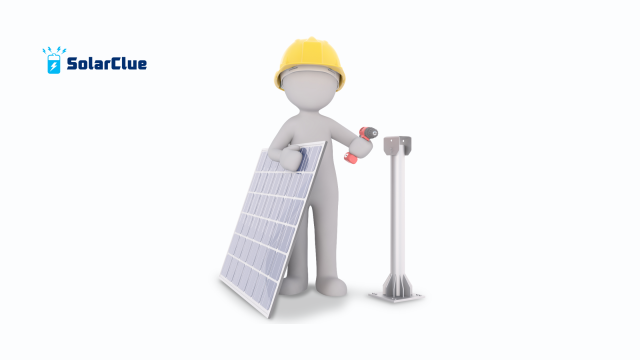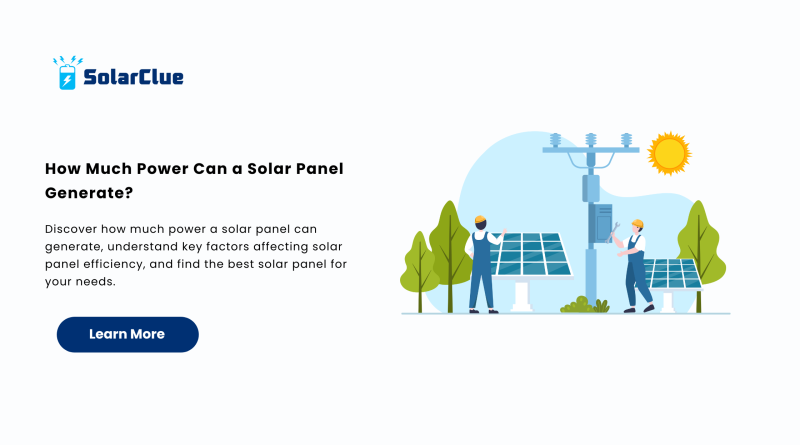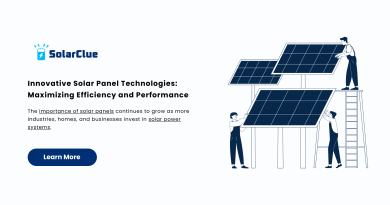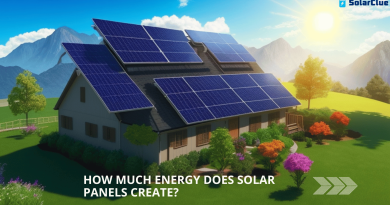How Much Power Can a Solar Panel Generate?
The shift toward renewable energy has made solar panel systems more accessible and efficient than ever. A common question many homeowners ask is: how much power can a solar panel generate? The answer isn’t one-size-fits-all—it depends on several variables including panel type, location, weather, and usage. In this blog, we’ll break it all down so you can make an informed choice about investing in solar panels for home.
Table of Contents
- 1 Understanding Solar Panel Power Ratings
- 2 Factors That Influence Solar Panel Power Output
- 3 Average Solar Panel Power Generation
- 4 Solar Panel Efficiency Explained
- 5 Choosing the Best Solar Panel for Your Needs
- 6 Installation Considerations
- 7 How to Maximize Your Solar Power Output
- 8 Are Solar Panels Worth It?
- 9 Conclusion
- 10 FAQs
Understanding Solar Panel Power Ratings
What Is a Solar Panel’s Wattage?
A solar panel’s power is typically measured in watts (W). Standard panels range from 250W to 450W per panel, with higher-end residential best solar panel models now reaching over 500W. This rating refers to the amount of power it can produce under ideal test conditions.
Standard Test Conditions (STC)
STC represents a sunny day with solar irradiance of 1000 watts/m² at 25°C. These conditions rarely reflect real-world usage but offer a baseline to compare different models.
Factors That Influence Solar Panel Power Output
Geographic Location
Your location greatly impacts the potential energy your solar panel can generate. For example, panels in Rajasthan or California will produce more energy than those in London or Seattle.
Sunlight Exposure
Direct and prolonged exposure to sunlight significantly increases energy yield. Shaded or north-facing roofs may reduce your solar panel efficiency.
Panel Orientation and Tilt
To get the most from your solar panel for home, position the panels south-facing with a tilt angle equal to your latitude.
Seasonal Variation
Energy production tends to be higher in summer due to longer daylight hours and lower during the winter.
Average Solar Panel Power Generation

Daily Energy Output
A 400W solar panel under ideal conditions generates around 1.6–2.5 kWh per day. Multiply this by the number of panels and days to estimate your total system output.
Monthly and Annual Estimates
If one 400W panel produces 60 kWh/month, then a 5kW system (~12 panels) would generate about 600–750 kWh/month or 7,200–9,000 kWh annually.
Solar Panel Efficiency Explained
What Is Efficiency?
Solar panel efficiency refers to how well a panel converts sunlight into usable electricity. Modern panels range from 15% to 23% efficiency, with the best solar panel models often exceeding 22%.
Factors That Affect Efficiency
- Cell type (monocrystalline vs. polycrystalline)
- Quality of materials
- Temperature
- Dust and maintenance
Choosing the Best Solar Panel for Your Needs
Residential Use
For solar panels for home, prioritize high efficiency, long warranty, and reliable brands. Monocrystalline panels are generally more efficient and space-saving.
Commercial Use
Commercial setups might benefit from lower-cost, high-volume polycrystalline panels if space allows.
Off-Grid vs. Grid-Tied
Off-grid systems need batteries, increasing cost and complexity. Grid-tied systems are simpler and can feed surplus power back to the grid.
Installation Considerations
Roof Space
Measure your roof’s usable area to determine how many panels you can fit. Average panels are around 1.7m² each.
Inverter Quality
A high-efficiency inverter can minimize power loss during the DC to AC conversion process.
Professional Installation
Hire certified installers to ensure safety and performance. They’ll also handle permits and government incentives.
How to Maximize Your Solar Power Output
Regular Maintenance
Keep panels clean and inspect for debris or damage to maintain solar panel efficiency.
Use Energy During Peak Hours
Align appliance use with daytime solar output to minimize reliance on grid power.
Smart Home Integration
Connect your solar panel for home to a smart energy management system to optimize consumption.
Are Solar Panels Worth It?
Financial Return
Though initial costs are high, savings on energy bills and government subsidies can offer a solid return on investment in 4–7 years.
Environmental Impact
Each kilowatt-hour produced by a solar panel reduces your carbon footprint, contributing to a sustainable future.
Conclusion
Now that you understand how much power a solar panel can generate, you can better assess your energy needs and find the best solar panel setup for your home or business. From calculating daily output to considering solar panel efficiency, every detail matters. Make your switch to solar smarter, greener, and future-ready.
To explore top-rated solar solutions and expert guidance, we invite you to visit our site—discover more at solarclue.com and get more insights on blog.solarclue.com—power your future with clarity!
FAQs
1. How much electricity can a single solar panel produce?
A standard 400W solar panel can produce about 1.6 to 2.5 kWh of electricity per day under optimal conditions.
2. What size solar panel system do I need for a 3BHK home?
Depending on usage, a 3–5 kW system is usually suitable, which consists of 8–12 solar panels for home.
3. Which type of solar panel is most efficient?
Monocrystalline panels offer the highest solar panel efficiency, often exceeding 22%.
4. Can I run an air conditioner on solar power?
Yes, a well-sized solar panel system with proper inverter and battery support can run an air conditioner.
5. How long do solar panels last?
Most solar panels come with 25–30 years of performance warranty and can last even longer with good maintenance.




